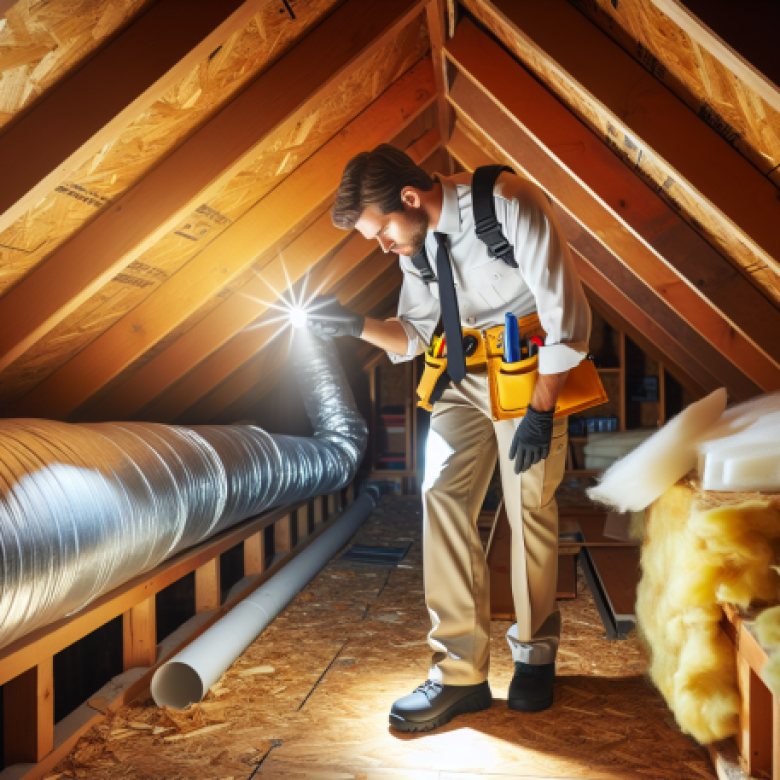Indoor air quality (IAQ) is a crucial aspect of our living and working environments that often goes unnoticed until it becomes a problem. One of the most significant factors affecting IAQ is humidity. Understanding how humidity impacts indoor air quality can help homeowners and business owners alike maintain a healthier environment. In this comprehensive guide, we will explore the relationship between humidity and indoor air quality, the effects of high and low humidity levels, and practical solutions for managing humidity in your space.
Understanding Humidity and Its Measurement
Humidity refers to the amount of moisture present in the air. It is typically measured in two ways: absolute humidity, which is the total mass of water vapor in a given volume of air, and relative humidity (RH), which is the percentage of moisture in the air compared to the maximum amount of moisture the air can hold at a given temperature. For instance, a relative humidity of 50% means that the air is holding half of the moisture it can potentially hold at that temperature.
Maintaining optimal humidity levels is essential for both comfort and health. The ideal indoor relative humidity level is generally between 30% and 50%. When humidity levels fall below this range, the air can become too dry, leading to discomfort and health issues. Conversely, when humidity levels rise above this range, it can create an environment conducive to mold growth and other indoor air quality problems.
For those dealing with issues related to humidity, dehumidification services can be a valuable solution. These services help to reduce excess moisture in the air, thereby improving indoor air quality and preventing damage to property.
The Effects of High Humidity on Indoor Air Quality
High humidity levels can have a detrimental impact on indoor air quality. When the air is saturated with moisture, it creates an environment that is ideal for mold and mildew growth. Mold spores can thrive in damp conditions, leading to potential health risks for occupants. Exposure to mold can cause respiratory issues, allergic reactions, and other health problems, particularly for individuals with pre-existing conditions.
In addition to mold growth, high humidity can also lead to the proliferation of dust mites and other allergens. Dust mites thrive in humid environments, and their droppings can trigger asthma and allergy symptoms. Furthermore, high humidity can cause discomfort, leading to increased reliance on air conditioning systems, which can further exacerbate indoor air quality issues if not properly maintained.
For commercial property owners, maintaining optimal humidity levels is crucial not only for the health of occupants but also for the preservation of the property. Excess moisture can lead to structural damage, requiring water damage restoration services to address the issues caused by prolonged exposure to high humidity.
The Effects of Low Humidity on Indoor Air Quality
On the other end of the spectrum, low humidity levels can also negatively impact indoor air quality. When the air is too dry, it can lead to a range of health issues, including dry skin, irritated eyes, and respiratory problems. Low humidity can exacerbate conditions such as asthma and allergies, making it uncomfortable for occupants.
Dry air can also affect the integrity of wooden furniture and structures. Wood can shrink and crack when exposed to low humidity levels, leading to costly repairs and restoration efforts. In residential properties, this can result in the need for reconstruction services to restore damaged areas.
To combat low humidity, many homeowners and businesses turn to humidifiers. These devices add moisture to the air, helping to maintain a comfortable and healthy indoor environment. However, it is essential to monitor humidity levels closely, as over-humidifying can lead to the same problems associated with high humidity.
The Role of Humidity in Mold Assessment and Remediation
Humidity plays a critical role in mold assessment and remediation processes. When assessing a property for mold, professionals will often measure humidity levels to determine the likelihood of mold growth. High humidity levels can indicate a potential mold problem, prompting further investigation and testing.
Once mold is detected, effective remediation requires addressing the underlying humidity issues. This may involve implementing mold assessment and remediation strategies that include controlling humidity levels through dehumidification and improving ventilation. Properly managing humidity is essential to prevent mold from returning after remediation efforts.
For those facing mold issues, it is crucial to act quickly. Delaying remediation can lead to more extensive damage and health risks. Companies like Projekt Restoration offer 24/7 emergency services for mold remediation, ensuring that property owners can address these issues promptly and effectively.
Practical Solutions for Managing Humidity
Managing humidity levels in indoor environments requires a combination of strategies. Here are some practical solutions to consider:
- Use Dehumidifiers: Dehumidifiers can help reduce excess moisture in the air, particularly in areas prone to high humidity, such as basements and bathrooms.
- Improve Ventilation: Proper ventilation is essential for maintaining optimal humidity levels. Ensure that exhaust fans are functioning correctly and consider installing vents in areas that trap moisture.
- Seal Leaks: Inspect your property for leaks and seal any gaps that may allow moisture to enter. This can help prevent humidity levels from rising.
- Monitor Humidity Levels: Use hygrometers to monitor indoor humidity levels regularly. This will help you identify when levels are too high or too low.
- Regular Maintenance: Schedule regular maintenance for HVAC systems to ensure they are functioning efficiently and effectively managing humidity levels.
By implementing these strategies, property owners can maintain a healthier indoor environment and reduce the risk of humidity-related issues.
Conclusion
Understanding the impact of humidity on indoor air quality is essential for maintaining a healthy living and working environment. Both high and low humidity levels can lead to various health issues and property damage, making it crucial to monitor and manage humidity effectively. By utilizing dehumidification, improving ventilation, and conducting regular assessments, property owners can mitigate the risks associated with humidity.
If you are facing challenges related to humidity, mold, or water damage, Projekt Restoration is here to help. Our team of experts specializes in water damage restoration, fire damage restoration, and biohazard cleanup, providing low pricing and insurance claims assistance. Contact us today for 24/7 emergency services and take the first step towards a healthier indoor environment.





